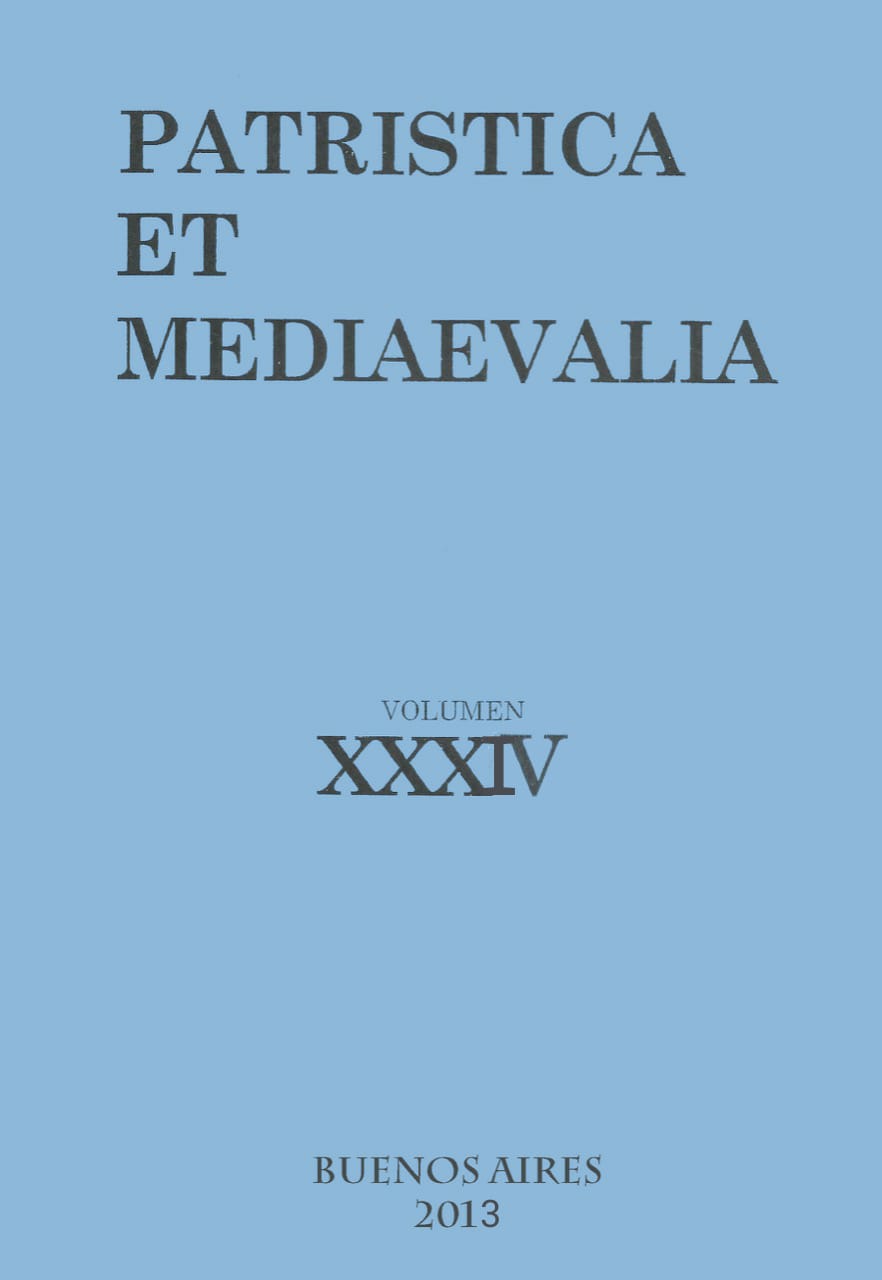The Aristotelian Model of Understanding of Cognitive Phenomena and his Medieval Reception
Abstract
Our purpose is to analyze some features of the Aristotelian model of the cognitive phenomena which can be considered as proper of an intentional concept of the mind: (i) a common or parallel structure to analyze sense perception and intellectual cognition; (ii) the categorization of the mental affairs under the notion of relatives or relation; (iii) the ambiguous characterization of cognition as a relation of identity or similarity between he who knows and what is known. When compared with the classical notion of intentionality as defined by Brentano, the Aristotelian model shows both similarities and differences. The medieval scholastic model seems to be, because of a variety of reasons, in a middle term between both.Downloads
References
Amerini, F. (2011) Intentionality. En Lagerlund, H. Encyclopedia of Medieval Philosophy: Philosophy between 500 and 1500. Dordrecht: Springer.
Biard, J. (2001). La notion de praesentialitas au XIVe siècle. En Perler, D. (ed.). Ancient and Medieval Theories of Intentionality. Leiden/Boston/Köln: Brill, 265-282.
Black, D. (1997). Avicenna and the Ontological and Epistemic Status of Fictional Beings. Documenti e studi sulla tradizione filosofica medievale, 8, 425-453.
Boeri, M. D. (2011). Introducción. En Aristóteles, Acerca del alma, introducción, notas, prólogo e introducción de M. D. Boeri. Buenos Aires: Colihue, XIII-LXXX.
Bottin, F. (2005). Filosofia medievale della mente. Padua: Il Poligrafo.
Burnyeat, M. (1992). Is an Aristotelian Philosophy of Mind still Credible? A Draft. En Nussbaum, M. & Oksenberg Rorty, A. (eds.). Essays on Aristotle's De anima. Oxford: Clarendon Press, 15-26.
Calvo Martínez, T. (1978). Introducción. En Aristóteles, Acerca del alma, introducción, traducción y notas de T. Calvo Martínez. Madrid: Gredos.
De Libera, A. (2004). Intention. En Cassin, B. (dir.) Vocabulaire eruropéen des philosophies. Paris: Seuil, 593-604.
De Rijk, L. M. (ed.) [2005]. Giraldus Adonis O.F.M. Opera Philosophica, vol. II: De Intentionibus. Critical Edition with a Study on the Medieval Intentionality Debate up to ca. 1350. Leiden/Boston: Brill.
Ebbesse, S. (1986). The Chimera’s Diary. En Knuuttila, S. & Hintikka, J. (eds). The Logic of Being. Historical Studies. Dordrecht: Stringer, 115-143.
Jacob, P. Intentionality. The Stanford Encyclopedia of Philosophy. Fall 2010 edition. Online.
Kahn, H. (1992). Aristotle on Thinking. En Nussbaum, M. & Oksenberg Rorty, A. (eds.). Essays on Aristotle's De anima. Oxford: Clarendon Press, 359-379.
King, P. (2007). Rethinking Representation in the Middle Ages. A Vade-Mecum to Mediaeval Theories of Mental Representation. En Lagerlund, H. (ed.). Representation and Objects of Thought in Medieval Philosophy. (Ashgate Studies in Medieval Philosophy). Cambdrige: Routledge, 83-102.
King, P. Mental Representation in Medieval Philosophy. En The Stanford Encyclopedia of Philosophy. Online.
Nussbaum, M. & Oksenberg Rorty, A. (eds.) [1992]. Essays on Aristotle's De anima. Oxford: Clarendon Press.
Pasnau, R. (2007). Theories of Cognition in the Later Middle Ages. Cambridge/New York: Cambridge University Press.
Perler, D. (ed.) [2001]. Ancient and Medieval Theories of Intentionality. Leiden/Boston/Köln: Brill.
Perler, D. (ed.) [2003]. Théories de l’intentionnalité au Moyen Âge. Paris: Vrin.
Sinnott, E. (2009). Introducción. En Aristóteles, Categorías, introducción, traducción y notas de E. Sinnott. Colihue: Buenos Aires.
Sorajabi, R. (1991). From Aristotle to Brentano: the Development of the Concept of Intentionality. Oxford Studies in Ancient Philosophy, 9, 227-259.
Sorabji, R. (1992). lntentionality and Physiological Processes: Aristotle's Theory of Sense-Perception. En Nussbaum, M. & Oksenberg Rorty, A. (eds.). Essays on Aristotle's De anima. Oxford: Clarendon Press, 195-225.
Sorabji, R. (2001). Why the Neoplatonists did not have Intentional Objects. En Perler, D. (ed.). Ancient and Medieval Theories of Intentionality. Leiden/Boston/Köln: Brill, 105-114.
Tachau, K. (1988). Vision and Certitude in the Age of Ockham: Optics, Epistemology and the Foundation of Semantics 1250-1345. Leiden/New York/Köln: Brill.
Tweedale, M. (2001). Representation in Scholastic Epistemology. En: Lagerlund, H. (ed.). Representation and Objects of Thought in Medieval Philosophy. (Ashgate Studies in Medieval Philosophy). Cambridge: Routledge, 63-82.
Vigo, A. (1995). Introducción. En Aristóteles, Física, introducción, traducción y notas. Buenos Aires: Biblos.
Vigo, A. (2001-2002). Indiferentismo ontológico y fenomenología en la Física de Aristóteles. Seminarios de Filosofía, 14/15, 77-110.
1. The authors who publish in this magazine accept the following conditions:
-
They retain the copyright and grant to the magazine the right of the first publication, with the work registered under the Attribution-ShareAlike 4.0 International License that allows third parties to use what is published as long as they mention the authorship of the work and the first publication in this magazine.
-
They can make other independent and additional contractual agreements for the non-exclusive distribution of the version of the article published in this magazine (eg. include it in an institutional repository or publish it in a book) provided that they clearly indicate that the work was first published in this journal.
-
They are allowed and recommended to publish their work on the Internet (for example on institutional or personal pages).
2. AutoArchive Conditions. Authors are allowed and encouraged to distribute post-print electronic versions of their manuscripts because it promotes their circulation, a possible increase of quotation and a major reach among the Academic community. Color RoMEO: blue.













